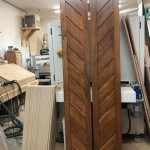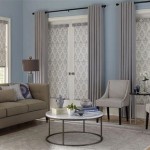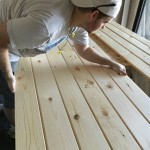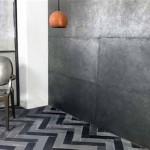Brick Veneer For Interior Walls: A Comprehensive Guide To IC3-Compliant Installations
Brick veneer, a popular choice for both exterior and interior design, offers the aesthetic appeal of traditional brick construction without the added weight and structural demands. When used for interior walls, it allows for the creation of rustic, industrial, or contemporary designs within a space. However, the successful and long-lasting application of brick veneer indoors hinges on adherence to industry best practices, particularly those related to installation, substrate preparation, and material compatibility. A key element of these best practices is compliance with IC3 standards, which govern the installation of thin brick veneer and provide a framework for ensuring quality and durability.
This comprehensive guide will explore the intricacies of applying brick veneer to interior walls, with a specific focus on understanding and implementing IC3-compliant installation techniques. It will delve into substrate preparation, mortar selection, laying patterns, and the critical aspects of ensuring a successful and aesthetically pleasing installation that meets industry standards and avoids common pitfalls.
Understanding IC3 Standards for Brick Veneer Installation
IC3, which stands for "Installation Ceramic, Concrete, and Clay," is a set of guidelines and standards developed by the Brick Industry Association (BIA) and other relevant organizations. These standards specifically address the installation of thin brick veneer, including interior applications. The purpose of IC3 is to provide a uniform and reliable method for installing brick veneer, ensuring its structural integrity, weather resistance (even in interior applications, moisture control is relevant), and long-term performance. Ignoring IC3 recommendations can lead to installation failures, moisture damage, and costly repairs.
The IC3 standards cover a wide range of topics, including substrate requirements, mortar selection, application techniques, and expansion joint placement. While primarily focused on exterior applications, many of the principles outlined in IC3 are directly applicable to interior brick veneer installations. Considerations for interior installations include managing moisture behind the veneer (especially in bathrooms or kitchens), ensuring proper adhesion to the substrate (which may vary from standard exterior sheathing), and accommodating thermal movement and expansion.
One crucial aspect of IC3 is the emphasis on using appropriate materials and methods for the specific application. This includes selecting the correct type of mortar based on the brick veneer type, the substrate material, and the expected environmental conditions. IC3 also provides guidelines for proper surface preparation, ensuring that the substrate is clean, level, and capable of supporting the weight of the brick veneer. Furthermore, it dictates the proper application techniques, such as back-buttering the brick veneer and ensuring full mortar contact.
Essential Steps for Preparing Interior Walls for Brick Veneer
Proper substrate preparation is paramount for a successful brick veneer installation. The surface on which the veneer will be applied must be structurally sound, clean, and properly prepared to ensure adequate adhesion. Neglecting this step can lead to the veneer detaching from the wall over time.
Initially, the existing wall surface must be thoroughly inspected. Any loose paint, wallpaper, or other coatings must be removed. The surface should be free of dust, dirt, grease, and efflorescence (salt deposits). Cleaning methods might include scraping, wire brushing, and washing with a suitable cleaning solution. The specific cleaning agent should be chosen based on the type of contaminants present.
Next, the substrate’s suitability for accepting brick veneer needs to be assessed. Common interior wall substrates include drywall, concrete, and wood. Drywall, while common, requires special considerations. Untreated drywall is generally unsuitable for direct brick veneer application due to its limited load-bearing capacity and susceptibility to moisture damage. Reinforcing the drywall with a cement backer board, such as HardieBacker or Durock, is highly recommended. Cement backer board provides a durable, moisture-resistant surface that can adequately support the weight of the brick veneer and withstand the moisture fluctuations that might occur in an interior environment. The cement backer board should be installed according to the manufacturer's instructions, ensuring proper screw spacing and seam treatment.
Concrete walls typically provide a more suitable substrate, but they must still be properly prepared. Any cracks or imperfections should be patched with a suitable patching compound. The surface should be roughened to improve adhesion. This can be achieved through methods such as acid etching or mechanical abrasion. Afterward, the concrete must be thoroughly rinsed and allowed to dry completely before applying any mortar.
Wood substrates, such as plywood, also require careful preparation. The wood must be structurally sound and free of rot or decay. A layer of building paper or a waterproof membrane should be installed over the wood to protect it from moisture. Similar to drywall, cement backer board is often recommended to provide a stable and moisture-resistant surface for the brick veneer.
After the substrate is prepared, a scratch coat may be applied. The scratch coat is a thin layer of mortar applied to the substrate to provide a better bonding surface for the brick veneer. The scratch coat should be lightly scratched with a trowel to create a rough surface that will improve adhesion. The scratch coat must be allowed to cure properly before proceeding with the brick veneer installation.
Mortar Selection and Application Techniques for IC3 Compliance
Selecting the appropriate mortar is crucial for the long-term performance of the brick veneer. The type of mortar chosen should be compatible with both the brick veneer and the substrate. IC3 standards typically recommend a Type S or Type N mortar for thin brick veneer installations. These mortars offer a good balance of strength, flexibility, and workability.
Type S mortar is generally stronger than Type N mortar and is recommended for applications where higher compressive strength is required. Type N mortar, on the other hand, is more flexible and better suited for applications where there is a greater risk of movement or expansion. The specific mortar recommendation will depend on the type of brick veneer being used, the substrate material, and the environmental conditions within the interior space. Consulting with a qualified professional or referring to the brick veneer manufacturer's recommendations is advisable.
The mortar should be mixed according to the manufacturer's instructions, ensuring a consistent and workable consistency. Avoid adding excessive water to the mortar, as this can weaken its strength and reduce its adhesion. The mortar should be applied to the back of the brick veneer using a trowel. This process is known as "back-buttering." The mortar should be applied evenly and thickly enough to create a good bond with the substrate. It is essential to ensure full mortar contact between the brick veneer and the substrate. This means that there should be no gaps or voids in the mortar layer.
Once the mortar is applied, the brick veneer should be pressed firmly onto the prepared substrate. Use a level to ensure that the brick veneer is properly aligned and plumb. Maintain consistent joint spacing between the bricks. Joint spacing is typically between 3/8 inch and 1/2 inch, but it may vary depending on the desired aesthetic. Use spacers to maintain consistent joint spacing during installation. As the brick veneer is installed, excess mortar should be removed from the joints and the face of the bricks. This can be done using a trowel or a stiff brush. Avoid smearing mortar across the face of the bricks, as this can be difficult to remove later.
After the brick veneer has been installed, the mortar joints should be tooled. Tooling is the process of shaping the mortar joints to create a consistent and aesthetically pleasing finish. Common tooling profiles include concave, V-shaped, and flush. The tooling should be done when the mortar is partially set but still pliable. This typically occurs a few hours after the brick veneer has been installed. Use a jointing tool that is appropriately sized for the joint width. Run the jointing tool along the mortar joints, applying consistent pressure to create the desired profile. Remove any excess mortar that is squeezed out during the tooling process.
Finally, after the mortar has fully cured, the brick veneer should be cleaned to remove any remaining mortar residue or efflorescence. Use a mild detergent and a soft brush to clean the bricks. Avoid using harsh chemicals or abrasive cleaners, as these can damage the brick veneer. Rinse the bricks thoroughly with clean water and allow them to dry completely.
By adhering to these IC3-compliant mortar selection and application techniques, the brick veneer installation will be structurally sound, aesthetically pleasing, and long-lasting. Proper mortar selection and application are critical for preventing moisture intrusion, ensuring adequate adhesion, and maintaining the overall integrity of the brick veneer system.

How To Install Thin Brick Veneer Interior And Exterior Installation

Brick Interior Faux Vs Real

How To Install A Thin Brick Wall Step By Guide Company

How To Install Brick Veneer On A Wall

How To Install Thin Brick Like A Pro

7 Ways To Update Your Interior Exposed Brick Wall

Interior Insulation Of Masonry Walls Selected Problems In The Design

Installing Thin Brick Veneer A Step By Guide Glen Gery

A Comprehensive Guide On How To Build Diy Faux Brick Wall This Old House

Brick New Construction International Masonry Institute
Related Posts








